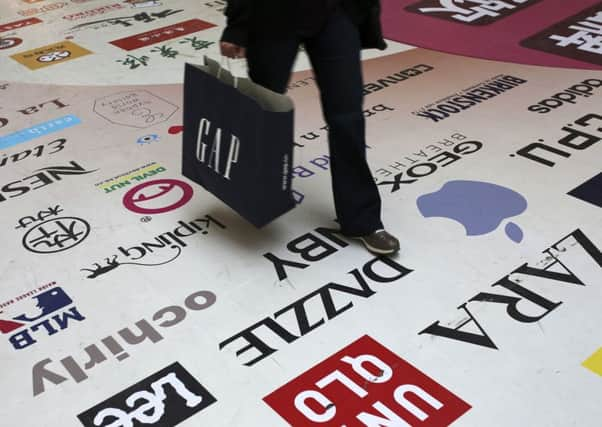Chinese economic growth steady as retail spending rises
This article contains affiliate links. We may earn a small commission on items purchased through this article, but that does not affect our editorial judgement.


The world’s second-largest economy grew by 6.7 per cent year-on-year in the three months to September, in line with the two previous quarters and better than some forecasters expected.
“Economic activity seems to be holding up reasonably well, with few signs that a renewed slowdown is just around the corner,” said Julian Evans-Pritchard of Capital Economics.
Advertisement
Hide AdAdvertisement
Hide AdHowever, analysts cautioned that growth is likely to slow next year because the latest strength is based in part on a surge in bank lending and property prices. Regulators see both as a risk and are trying to rein them in.
China’s economy has cooled steadily over the past six years as leaders try to steer it to more self-sustaining growth based on consumer spending instead of trade and investment.
Beijing has used higher government spending and infusions of credit to avert a sharper downturn and politically dangerous job losses. That has temporarily hobbled the ruling Communist Party’s long-term plan to make the state-dominated economy more productive and efficient by giving market forces a bigger role.
Retail sales jumped 10.4 per cent in the first three quarters, boosted by a 26.1 per cent surge in e-commerce. No figures for the latest quarter alone were released.
Growth in service industries, boosted by a surge in property sales, accelerated to 7.5 per cent from the previous quarter’s 7.8 per cent. By contrast, exports shrank by 5.6 per cent in September from a year earlier.
The data indicated that “China’s transition from a high-speed, heavy industry-based economy to a moderately-fast consumer and services-based economy is well underway,” said Andy Rothman of Matthews Asia.
He added: “The challenges of completing this transition will result in gradually slower growth rates and increased volatility, but the risks of a hard landing are very low.”
State media have warned China’s economic outlook will be “L-shaped,” meaning the downturn should bottom out but growth will not rebound to the double-digit rates of the past decade.
Advertisement
Hide AdAdvertisement
Hide AdGrowth in investment, still a key economic driver, accelerated in September to 9 per cent over a year earlier, up from August’s 8 per cent. But much of it came from state companies, reflecting the skittishness of private investors.
Spending by state companies on real estate and other fixed assets rose 21.1 per cent in the first nine months of the year while spending by private enterprises rose just 2.5 per cent.
“State-directed investment is keeping headline growth on target,” said Bill Adams of PNC Financial Services Group.
Beijing’s reliance on credit to drive growth since the 2008 global crisis has led to a rapid runup in China’s debt to the equivalent of 250 per cent of gross domestic product, high for a developing economy. That has prompted warnings of a possible financial crisis or a drag on growth if debt is not controlled.
Regulators announced plans last week to allow “high-quality enterprises” with “temporary difficulties” to pay down debt by giving their bankers equity in their enterprises.
The central bank’s measure of total credit showed growth in September edged up to 11.3 per cent compared with a year earlier, up from August’s 11.2 per cent rate.
“The recent recovery is ultimately on borrowed time given that it has been driven in large part by faster credit growth and a property market boom,” said Evans-Pritchard.
“As the boost from policy stimulus begins to wear off, probably at some point early next year, continued structural drags mean the economy is set to begin slowing again.”
